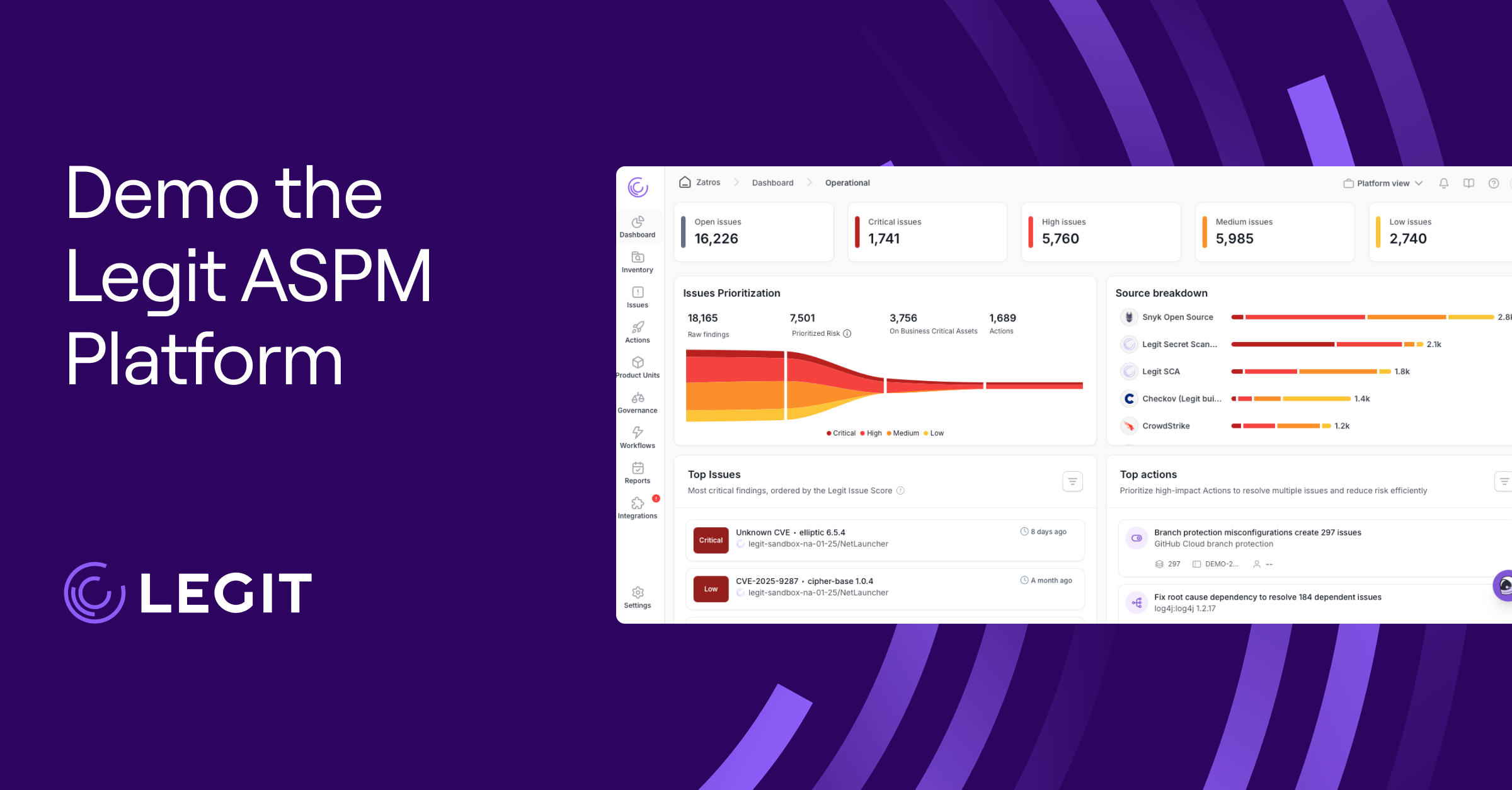Department of Defense (DoD) data is some of the most sensitive out there. That’s why the DoD designed the Cybersecurity Maturity Model Certification (CMMC) framework. It helps software providers implement cybersecurity measures to protect controlled information.
When you follow CMMC compliance requirements, you can secure DoD contracts while strengthening your defenses against evolving cyber threats. Here’s a CMMC overview with everything you need to know to achieve compliance.
What Is CMMC Compliance?
CMMC compliance ensures your organization has robust cybersecurity practices to safeguard sensitive and confidential information—mainly what the DoD calls Controlled Unclassified Information (CUI) and Federal Contract Information (FCI). CUI refers to sensitive technical or personally identifiable information (PII) related to defense projects, while FCI refers to information the government provides or generates under a contract not intended for public release.
Think of CMMC as a security scorecard. It measures your company's preparedness to handle DoD data by assessing your cybersecurity practices. If you don’t have enough best practices in place, the DoD won’t certify you.
There are three certification levels, representing varying cybersecurity strengths. Level 1 focuses on basic cyber hygiene, while Level 3 requires proactive, advanced security measures. Level 2 offers an intermediate step between them. They all build upon existing standards, like the National Institute of Standards and Technology (NIST) SP 800-171.
Who Needs CMMC Certification?
The DoD introduced CMMC to ensure that every organization handling DoD data, no matter how far down the supply chain, maintains strict cybersecurity practices.
If your organization works with the DoD, you must meet CMMC compliance requirements, whether handling complex technical information or managing a simple piece of the project. Compliance is mandatory if any activities involve CUI or FCI.
When Is CMMC Compliance Required?
The DoD published its final rule in late 2024, meaning the requirements are added to contracts from 2025 onward. Initially, CMMC requirements only applied to new contracts or those being renewed, but the DoD will eventually require it for all new, renewed, or ongoing contracts.
Organizations should prepare to become compliant as soon as possible if they haven’t already, especially because requirements cascade through the supply chain. This means that if a prime contractor must comply, subtractors have to as well.
CMMC Levels Explained
CMMC compliance consists of three maturity levels, each measuring how effectively your organization’s cybersecurity practices match the sensitivity of the information you handle. The higher the level, the more comprehensive your security measures must be.
Here’s a quick guide to each CMMC level:
CMMC Level 1: Basic Cyber Hygiene
Level 1 is about implementing foundational cybersecurity practices to protect FCI. This includes using strong passwords, installing antivirus software, and restricting system access to authorized users only.
If your organization handles low-risk information, Level 1 compliance is likely where you need to start. It’s a self-assessed process, which means you can handle it in-house every year. You just need to meet the minimum requirements in Federal Acquisition Regulation (FAR) 52.204-21—a federal regulation outlining basic FCI requirements.
CMMC Level 2: Advanced Cyber Hygiene
CMMC Level 2 takes things up a notch. This level focuses on enhanced practices like data encryption, secure system configurations, and having a plan for responding to incidents. You also have to meet the 110 security controls that NIST SP 800-171 outlines.
Compliance at Level 2 requires either a self-assessment or third-party assessment by a certified CMMC Third Party Assessment Organization (C3PAO), depending on the contract. This ensures you go beyond the basics and properly protect sensitive information.
CMMC Level 3: Expert
Level 3 is for organizations handling the most sensitive data. To comply, you need to meet all the requirements of Levels 1 and 2, plus additional controls from NIST SP 800-172. Unlike NIST SP 800-171, which focuses on protecting CUI, NIST SP 800-172 adds advanced safeguards to counter sophisticated threats such as advanced persistent threats (APTs). This means adopting proactive security measures, like continuous monitoring, to ensure you’re always ready for potential attacks.
Level 3 certification isn’t just about ticking boxes. It’s about demonstrating that your organization has a sophisticated, mature cybersecurity posture prepared to handle the highest risks.
CMMC Certification Cost
The cost of CMMC certification varies depending on several factors, including your organization’s size, the complexity of your network infrastructure, and the level of CMMC compliance you need.
For Level 1 compliance, the costs are generally more manageable since you can perform a self-assessment internally.
For Level 2 compliance, the expenses rise because you need to pay a C3PAO for a formal assessment. According to DoD estimates, a Level 2 assessment alone can exceed $100,000. This includes preparation work, hiring a C3PAO, and ongoing compliance affirmations. For Level 3, the costs become even more significant because of its rigorous requirements.
While compliance is expensive, remember that these costs aren’t going out the window. They’re an investment in your organization’s future. Plus, achieving CMMC compliance allows you to work with the DoD and secure your systems, protecting sensitive information against growing threats while working on larger projects.
CMMC Compliance Checklist
Achieving CMMC compliance is a structured process that requires careful preparation and a thorough understanding of the requirements at each level. The key to success is to break the process down into actionable steps and tackle each one systematically.
Here are the essential steps to getting CMMC compliant, from determining your maturity level to incorporating best practices:
1. Determine the CMMC Maturity Level
The first step in the CMMC journey is determining what level you need to meet. This helps you plan the resources and time you need for compliance.
2. Conduct a Self-Evaluation
Perform an internal assessment of current cybersecurity practices to identify gaps between existing measures and the CMMC requirements. The more you spot at this stage, the easier it is to address issues moving forward.
3. Develop a Plan of Action and Milestones (POA&M)
Create a POA&M to address any deficiencies and improvements. This document outlines your organization's steps to achieve compliance, including timelines, responsibilities, and the resources necessary to implement necessary changes.
4. Incorporate Other Cybersecurity Standards
CMMC compliance relies on existing standards like the NIST SP 800-171 framework. Align your practices with these standards to build a solid foundation for compliance. Incorporating as many cybersecurity best practices as possible enhances your security posture and smoothens the certification process.
5. Engage With a C3PAO
For Levels 2 and 3, you need a formal assessment by a C3PAO. Find one early to schedule your assessment and get their guidance on what to expect during the evaluation. Proper preparation can significantly increase your chances of a successful outcome.
6. Implement Continuous Monitoring
Compliance isn’t a one-time effort. Since all levels require further assessments, you need to keep up to date with requirements, vulnerabilities, and threats. Implement continuous monitoring to secure your systems and ensure ongoing adherence.
7. Train Your Workforce
A well-trained workforce can significantly improve your overall security posture by enhancing awareness, reducing human error, and fostering a strong security culture, minimizing the risk of cyberattacks and data breaches. Conduct regular training sessions to ensure everyone understands their responsibilities and follows best practices for cybersecurity.
Ensure Compliance With Legit Security
Achieving CMMC compliance is complex, but you can manage it with the right approach and tools.
Let Legit Security be a valuable partner on the journey to ongoing compliance. Our tools are designed to help organizations streamline compliance efforts, providing visibility across your software supply chain and automating critical parts of the CMMC process. Identify vulnerabilities, keep required controls in place, and maintain continuous monitoring to stay ahead of evolving threats. Book a demo today.
Download our new whitepaper.


